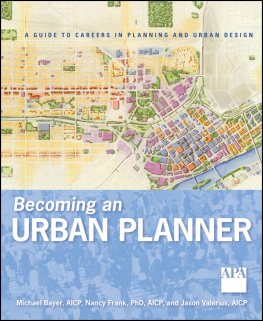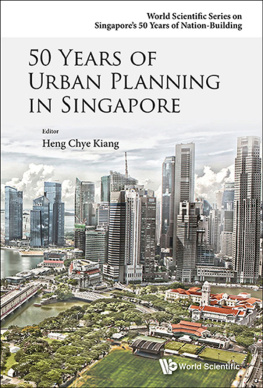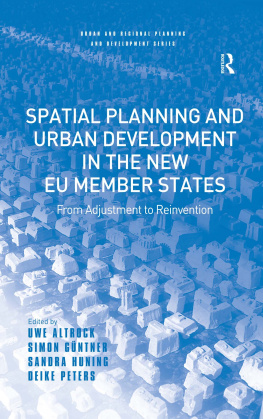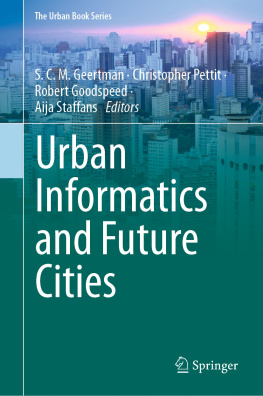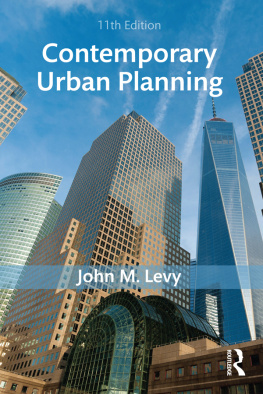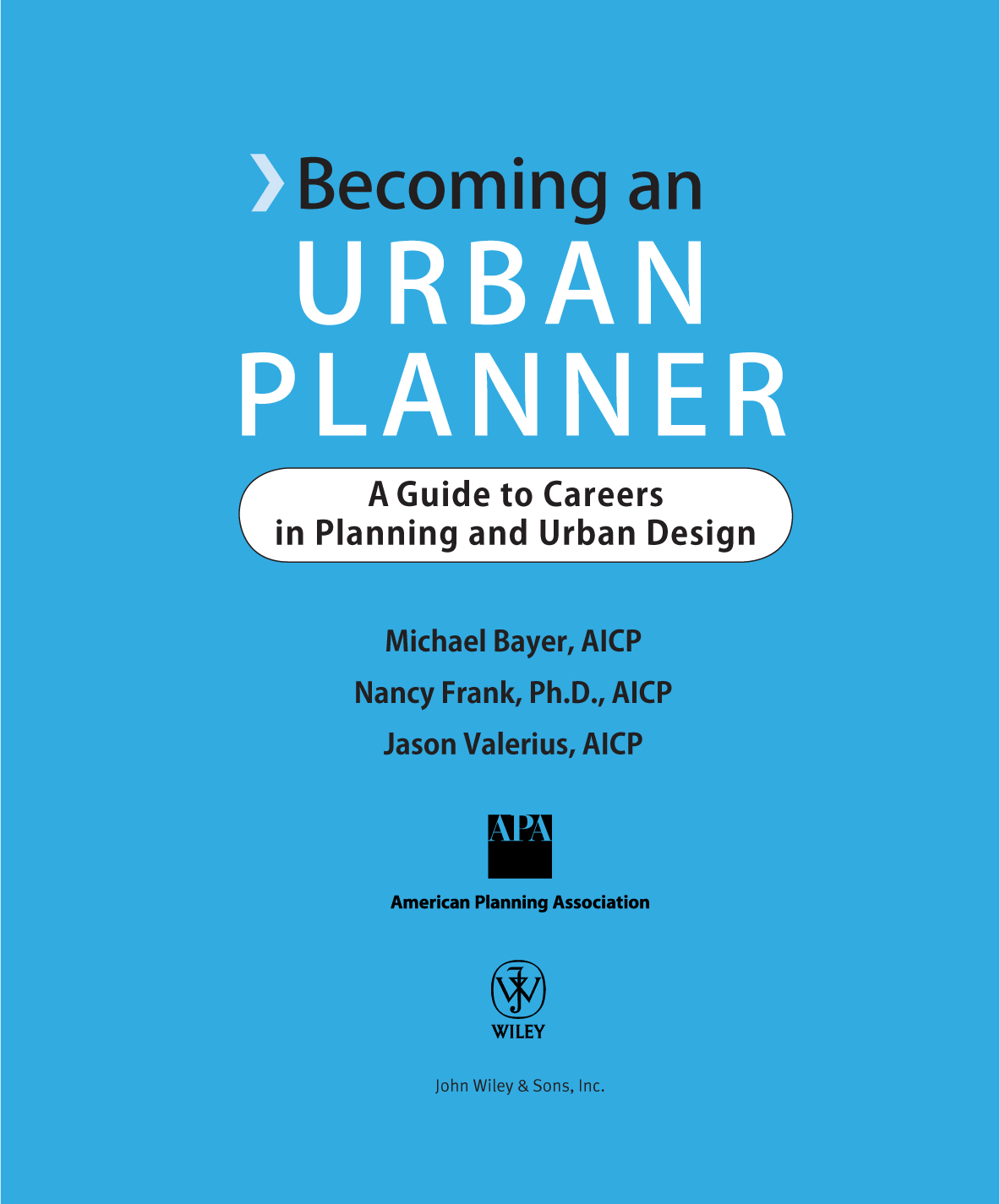Other Titles in the Series
Becoming an Architect, Second Edition
Lee W. Waldrep, Ph.D.
Becoming a Digital Designer
Steven Heller and David Womack
Becoming a Graphic Designer, Third Edition
Steven Heller and Teresa Fernandes
Becoming an Interior Designer, Second Edition
Christine M. Piotrowski FASID, IIDA
Becoming a Landscape Architect
Kelleann Foster
Becoming a Product Designer
Bruce Hannah
This book is printed on acid-free paper. 
Copyright 2010 by John Wiley & Sons, Inc. All rights reserved.
Published by John Wiley & Sons, Inc., Hoboken, New Jersey
Published simultaneously in Canada
No part of this publication may be reproduced, stored in a retrieval system, or transmitted in any form or by any means, electronic, mechanical, photocopying, recording, scanning, or otherwise, except as permitted under Section 107 or 108 of the 1976 United States Copyright Act, without either the prior written permission of the Publisher, or authorization through payment of the appropriate per-copy fee to the Copyright Clearance Center, 222 Rosewood Drive, Danvers, MA 01923, (978) 750-8400, fax (978) 646-8600, or on the web at www.copyright.com. Requests to the Publisher for permission should be addressed to the Permissions Department, John Wiley & Sons, Inc., 111 River Street, Hoboken, NJ 07030, (201) 748-6011, fax (201) 748-6008. Limit of Liability/Disclaimer of Warranty: While the publisher and the author have used their best efforts in preparing this book, they make no representations or warranties with respect to the accuracy or completeness of the contents of this book and specifically disclaim any implied warranties of merchantability or fitness for a particular purpose. No warranty may be created or extended by sales representatives or written sales materials. The advice and strategies contained herein may not be suitable for your situation. You should consult with a professional where appropriate. Neither the publisher nor the author shall be liable for any loss of profit or any other commercial damages, including but not limited to special, incidental, consequential, or other damages.
For general information about our other products and services, please contact our Customer Care Department within the United States at (800) 762-2974, outside the United States at (317) 572-3993 or fax (317) 572-4002.
Wiley also publishes its books in a variety of electronic formats. Some content that appears in print may not be available in electronic books. For more information about Wiley products, visit our web site at www.wiley.com.
Library of Congress Cataloging-in-Publication Data:
Bayer, Michael.
Becoming an urban planner : a guide to careers in planning and urban design / by Michael Bayer, Nancy Frank and Jason Valerius.
p. cm.
Includes bibliographical references and index.
ISBN 978-0-470-27863-5 (pbk.)
1. City planning--Vocational guidance. I. Frank, Nancy (Nancy K.), 1954- II. Valerius, Jason. III. Title.
NA9013.B39 2010
307.1'216023--dc22
2009018435
Bayer: To Michelle, Adam, and Clark
Valerius: To Amy and Rhys
Frank: To Bill
About the Authors
Michael Bayer, AICP , is a senior planner with Environmental Resources Management in Annapolis, Maryland, where he develops comprehensive plans for local governments. He has a master's degree in urban planning from the University of WisconsinMilwaukee. As a planner and journalist, he has researched and written extensively about land use, transportation, urban redevelopment, and environmental policy.
Nancy Frank, AICP and Associate Professor, is chair of the urban planning program at the University of WisconsinMilwaukee, where she teaches planning theory and environmental planning. She holds a Ph.D. from the Rockefeller College of Public Affairs & Policy at the State University of New York at Albany. In addition to her teaching and research, Dr. Frank is the founder of a charter high school in Milwaukee, the School for Urban Planning and Architecture.
Jason Valerius, AICP , is a senior planner with MSA Professional Services, Inc. in Madison, Wisconsin, where he leads a team of planners and urban designers engaged in a wide range of planning for local government and private development clients. He has master's degrees in architecture and urban planning from the University of WisconsinMilwaukee and has made planning and design for sustainable communities a focus of his practice.
Preface
WHAT DO I WANT TO DO IN MY CAREER? This question is universal and is one urban planners ask themselves even years after they've entered the profession. For most people, there is no simple answer, because the choices we have are limited only by our imaginations, our experiences, our knowledge, and the opportunities that surround us and that we are able to create for ourselves and for others.
Deciding to enter the planning profession is a key point in a person's life. While many resources exist to guide a person through the process of choosing a school or introducing particular fields of planning, to date there has been no one guide that provided this information with real-life examples to demonstrate planning as it is lived. Becoming an Urban Planner seeks to serve an important functionto provide a portrait of urban planning through the eyes of its practitioners.
Although planners touch everybody's lives in many ways, from the moment we open the door to the time we park our car or bicycle at the end of the work day, very few people outside of the profession understand what planning is and what planners do.
Segments of the public have become more informed about planning as smart growth and New Urbanism have become prominent public issues and we as a nation grapple with growth, sprawl, traffic congestion, infrastructure, land use, and revitalization at scales from the street to the megaregion.
The challenges provided by these issues have inspired countless people to become urban planners. What many have quickly found is that these problems are complex and must be addressed across disciplines, both within planning and by collaborating with allied professions.
At its core, urban planning is about problem solving: identifying problems, analyzing these problems to create a basis for decision making, working with communities and stakeholders to develop alternatives, and, ultimately, to implement solutions that address the problems and result in tangible benefits. This problem solving happens in many contexts: in governments and the private sector, in small towns and large cities, on site-specific issues with a few key players, and on global problems that involve thousands of people. The input on these issues spans the gamut as well: from small public meetings and focus groups to large interactive gatherings featuring web-based involvement tools where people provide input using the latest advances in technology.
Even planners who commit early to a particular specialization within planning and become expert in specific planning tools and contexts cannot anticipate how their careers will evolve and what issues they will confront in the future.
Becoming an Urban Planner addresses this complexity through the eyes of more than 80 planners working across the United States and Canada in a variety of situations. Through this book, we try to put a face to this complexity, inspire potential planners to explore planning as a career, and provide all of the information you need to make a decision to pursue planning and chart a course for your career.

